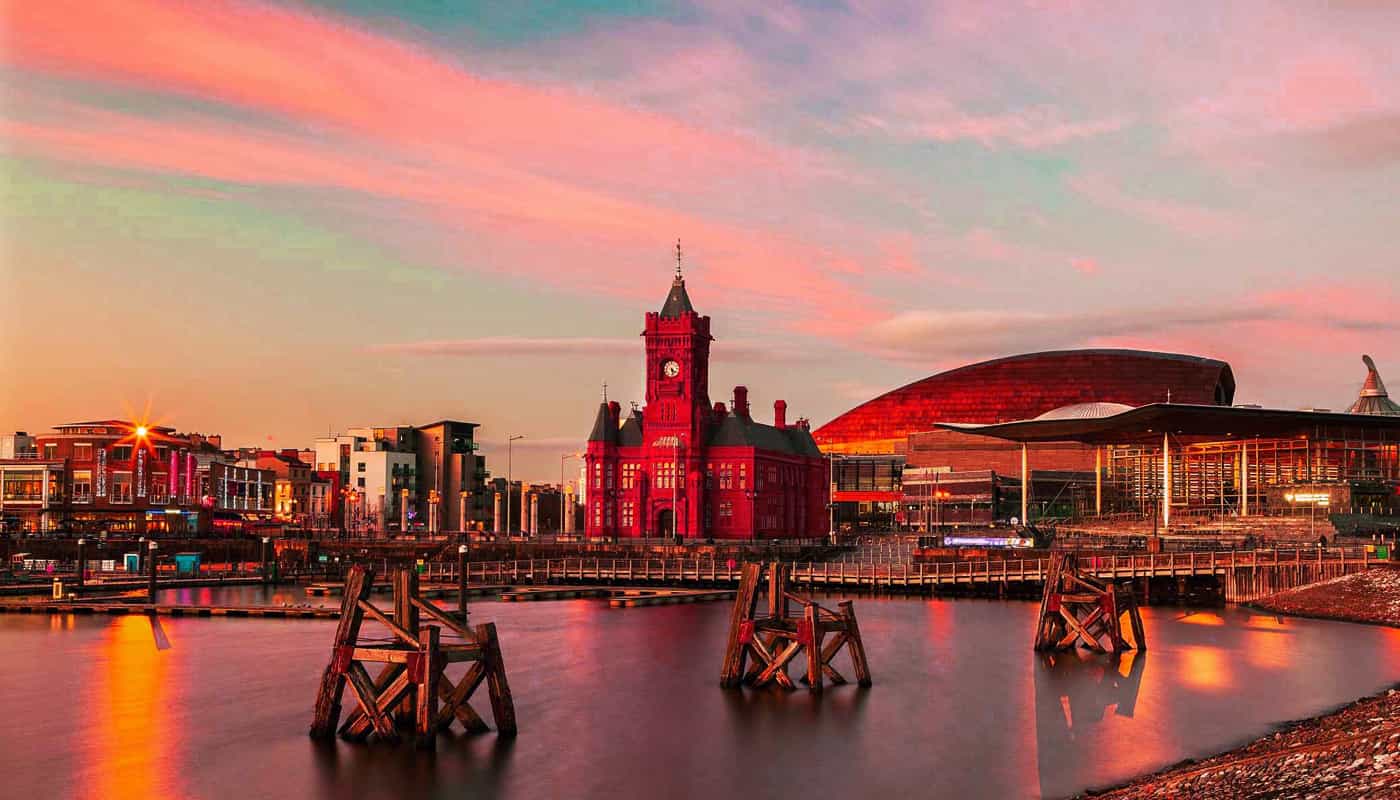Proud to introduce to you ...
CARDIFF
Cardiff is the capital of Wales and the country’s main commercial, cultural, sporting, educational, and media center. It is also a unitary authority located in the southeast, on the banks of the Bristol Channel near the English border. The city expanded significantly during the 19th century due to mining and port trade.
According to municipal estimates based on the 2006 census, Cardiff’s population was 317,500, making it the sixteenth most populous city in the United Kingdom. It attracts large numbers of tourists, with 11.7 million visitors recorded in 2006.
Experts believe that the name Cardiff—and its Welsh equivalent, Caerdydd—derive from post-Roman Brythonic words meaning “fort on the Taff.” Dydd or Diff are modifications of "Taff", the river on which Cardiff Castle stands (the Welsh mutation changes “T” to “D”). According to modern toponymists, the Welsh pronunciation Caerdyff became Caerdydd through the colloquial permutation of “-f” and “-dd.”
Earlier antiquarians such as William Camden suggested that Cardiff came from Caer-Didi (“Fort of Didius”) in honor of the Roman governor Aulus Didius Gallus, but modern linguists, including Professor Pierce Gwynedd of Cardiff University, have discredited this theory.
Roman Times to the Middle Ages
Cardiff was fortified by the Romans during their occupation of Britain. After their withdrawal in the early 5th century, the fort was abandoned, though remains are still visible in Cardiff Castle.
In 1091, Robert Fitzhamon reconstructed the castle, preserving parts of the Roman walls. It was later redesigned and expanded in the Victorian era by John Crichton-Stuart, 3rd Marquess of Bute, and architect William Burges.
A small village soon grew around the castle, mainly settled by English migrants. During the Middle Ages, Cardiff’s population fluctuated between 1,500 and 2,000—typical for a Welsh town of the time. By the late 13th century, it was the only Welsh city with more than 2,000 residents.
By 1327, Cardiff’s port had become central to the town’s economy. A wooden palisade was built in the early 12th century for protection.
In 1404, Owain Glyndŵr set fire to Cardiff and captured the castle. As most buildings were wooden, the town was largely destroyed, but it was quickly rebuilt and flourished again.
County Town of Glamorgan
The 1536 Act of Union between England and Wales created Glamorgan County, making Cardiff its county town. By then, the Herbert family dominated the local aristocracy. In 1538, Henry VIII dissolved the Dominican and Franciscan convents, using their remains as building materials.
Cardiff became a Free Municipality in 1542. In 1581, Queen Elizabeth I granted it its first Royal Charter, with a second issued in 1608.
During the Second English Civil War, the Battle of St. Fagans took place just west of Cardiff, ending in a decisive parliamentary victory and leading to Oliver Cromwell’s conquest of Wales. It was the last major battle on Welsh soil, with around 200 casualties.
In the 1790s, stagecoach services linked Cardiff to London; a racecourse, printing presses, banks, and coffeehouses followed. Despite these advances, Cardiff declined in importance during the 18th century. Iolo Morganwg described it as “a dark and insignificant place,” and the 1801 census recorded a population of only 1,870, ranking it 25th in Wales, far behind Merthyr and Swansea.
Construction of the Docks
In 1793, John Crichton-Stuart, 2nd Marquess of Bute, was born. Known as “the creator of modern Cardiff,” he spearheaded the development of the town’s docks. By 1815, regular services to Bristol were running.
During the Industrial Revolution, most of the world’s exported coal passed through Cardiff’s port, and the wealth generated financed the remodeling of Cardiff Castle and Castell Coch. From the 1830s, Cardiff became the main coal-exporting port for the Cynon, Rhondda, and Rhymney Valleys, growing nearly 80% per decade between 1840 and 1870. By 1881, Cardiff had surpassed Merthyr and Swansea to become the largest Welsh city, and the University of Wales was established in 1893.
In the 1880s, Cardiff’s docks faced competition from Barry Docks, developed by David Davies Llandinam and the Barry Railway Company. Barry’s facilities, accessible at all tides, soon surpassed Cardiff’s in coal exports after 1901, though the coal trade remained headquartered in Cardiff, particularly in its Coal Exchange. In 1890, Guest, Keen and Nettlefolds built a major steelworks in East Moors, strengthening Cardiff’s industrial base.
City Status
On October 28, 1905, Edward VII granted Cardiff city status. A Catholic cathedral followed in 1916. In the years that followed, numerous national institutions, including the National Museum of Wales, were established in the city.
After a brief post–World War I boom, the docks declined sharply in the interwar period. By 1936, trade volumes had fallen to less than half of 1913 levels due to the collapse
Cardiff
